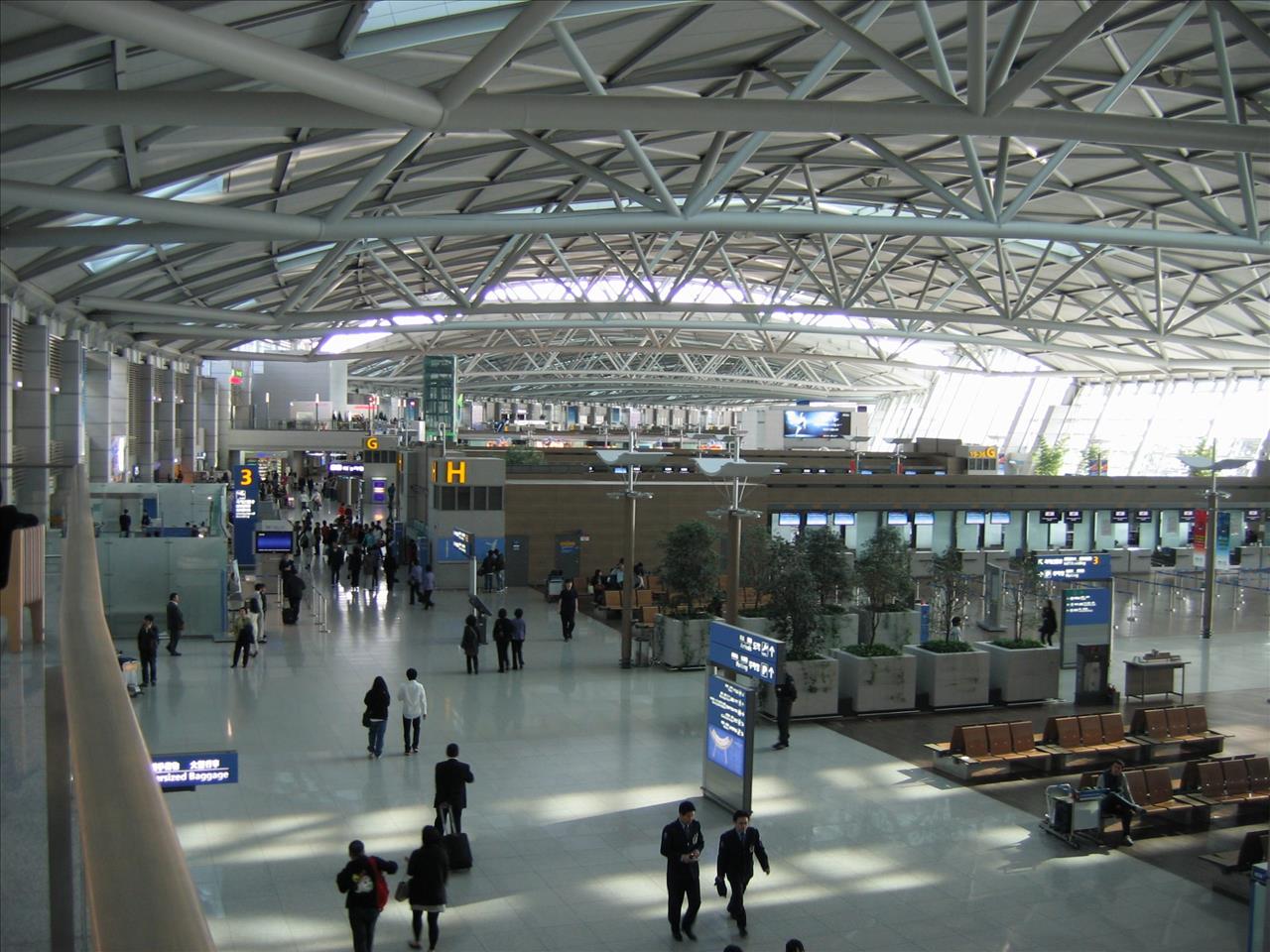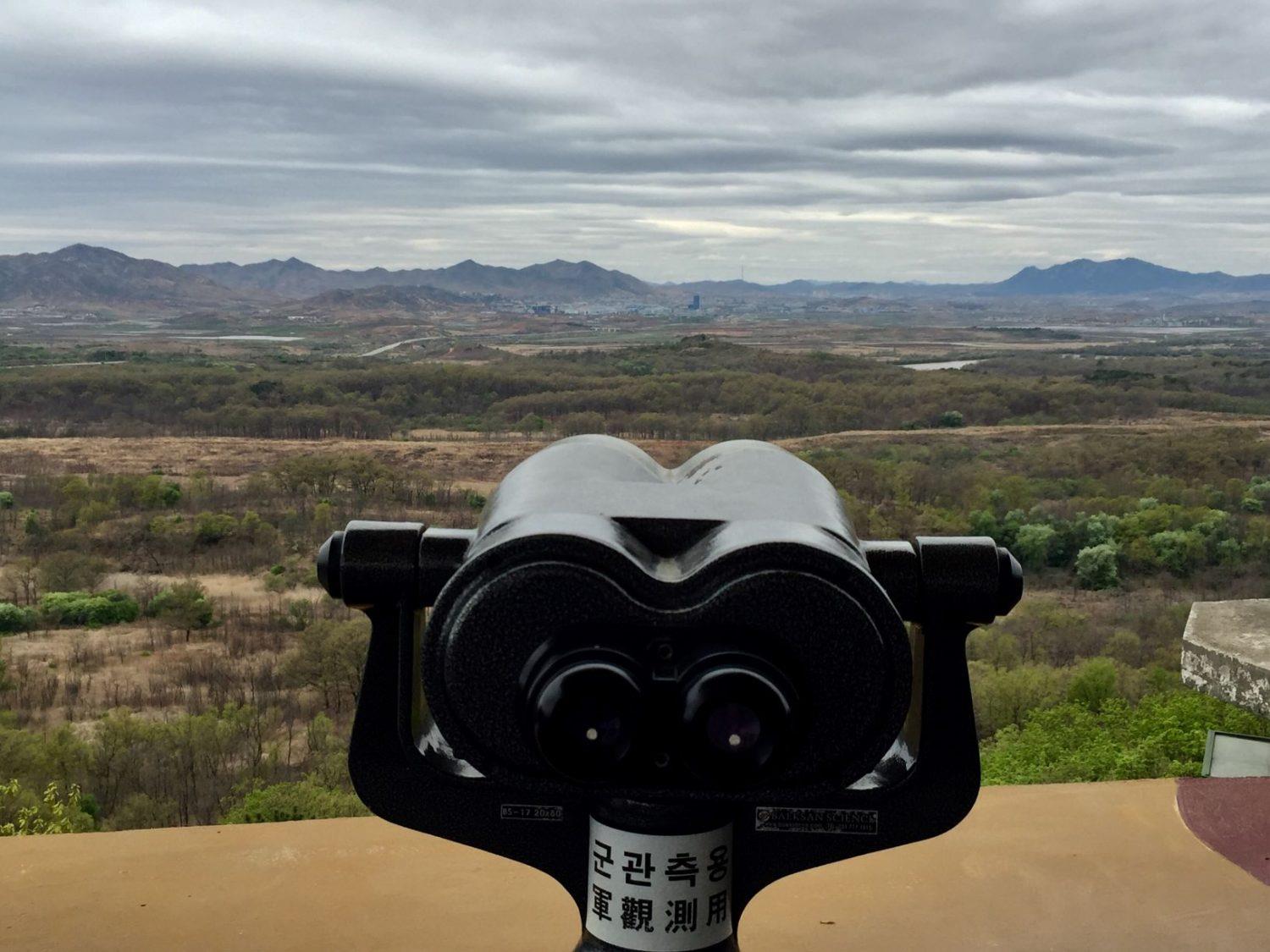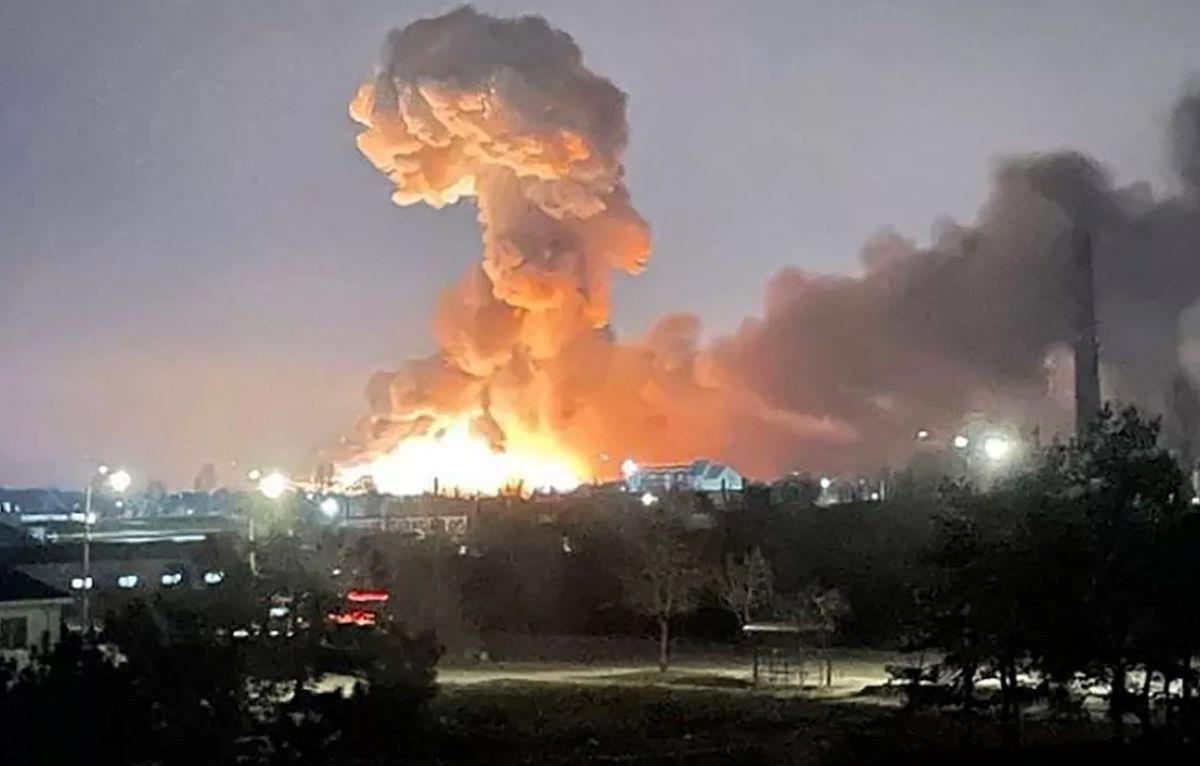(MENAFN- Asia Times) SEOUL – South Korea on Monday deployed a series of drones northward over the Demilitarized Zone separating the two nations – a countermove to the earlier intrusion of five North Korean drones into Southern airspace.
It was the first time the South has sent unmanned aerial vehicles (UAVs) north of the border – or, at least, the first time it has announced it was doing so. The North's drone flights into the South, which prompted the South's move, were the first since 2017.
The vulnerabilities exposed by the South Korean drones have sent shockwaves through the Seoul, prompting angry outbursts from the president, and in the National Assembly.
Adding to the bad news, a South Korean-built KA-1 attack jet crashed after being scrambled to intercept the North Korean UAVs. South Korean military helicopters opened fire – unsuccessfully – on one of the North Korean machines.
Asia Times has been unable to confirm whether or not more North Korean drones crossed the DMZ on Tuesday, as is rumored. There is some confusion over whether possible spottings were drones or birds.
Regardless, Monday's developments highlight the porousness of the air border to this small, cheap and hard-to-down new asset.
UAVs favor the offense – and also favor the economically disadvantaged North.
South Korea's leading-edge F-35 and F-15 fighters have the advantage over the North Korean air arm in terms of both airframes and, because of fuel shortages, pilot training time. But the South's inability to riposte successfully against the small, sneaky, economical drones suggests that North Korea has found an asymmetric sweet spot that confounds the South's defenses.
It is a spot that offers real leverage. Monday's intrusions caused the halt of operations at South Korea's two largest airports, Incheon and Gimpo. Both are in the Seoul area, so close to the DMZ.
“It reminds me of three or four years ago when drones around Gatwick Airport brought everything to a halt,” Alex Neill, an independent defense consultant based in Singapore, told Asia Times.“All you need to do with a drone is to demonstrate the ability to loiter to deny civilian air traffic.”
It was a crafty tactic that, if repeated, could hold the Seoul airports hostage. That would potentially cause massive economic damage to South Korea's air cargo sector, its status as an air hub, and its reputation as a tourism destination.
Another risk is whether or not either side will up the ante and deploy armed drones –“predator UAVs” – into the opposing airspace.
More broadly, the drone intrusion-counter intrusion is just the latest in a series of moves and countermoves on the peninsula. Worryingly for the South, it is usually the North that is the initiator of the cycle.

The departure area of Incheon International Airport, serving Seoul. The airport has been found to be highly vulnerable to flight stoppages caused by North Korean drones. Image: Wikimedia Commons Drone duel over the DMZ According to Seoul's Joint Chiefs of Staff (JCS), as reported by yonhap news , five North Korean drones crossed the DMZ on Monday afternoon.
Four of them loitered around Paju, the heavily armed county immediately south of the border, and Gangwha, a strategic island off the coast, while one overflew northern Seoul.
South Korean forces fired warning shots, and scrambled fighters and attack helicopters as a defensive measure. During the operations, a KA-1 light attack fighter crashed, for unknown reasons. Both pilots ejected safely.
Seoul was also compelled to close down flight operations at the nation's two major civilian airports, Incheon and Gimpo, both in the Seoul area, for about an hour.
The JCS did not confirm whether the North Korean drones were armed or not. None were shot down and all disappeared from South Korean radars after some five hours.
As there are no reports of any being recovered in South Korea, indications are that they successfully returned to the North.
“This is a clear act of provocation by North Korea that encroached upon our territorial air,” fumed Major-General Lee Seung-o, the JCS director of operations, at a press conference.
In what the JCS called a“corresponding step,” South Korean drones were sent over the DMZ to snoop on North Korean military positions. All returned safely, the JCS said, adding little detail.
Given that the last reported drone intrusion by the North was in 2017, Monday's overflights are an unwelcome wake up call for South Korean defense planners.
“It is a big shock that an enemy drone flew to the center of Seoul without any restriction and also that our attack aircraft crashed,” national assemblyman joo ho-young , the floor leader of the ruling People Power Party, said.
President Yoon Suk-yeoul weighed in during a cabinet meeting tuesday afternoon , blaming the lack of drone defenses on the previous Moon Jae-in administration. Yoon claimed the previous government had run no anti-drone defenses since 2017, the year Moon took office.
Moon sought to cool tensions and engage the North, though the failure of then-US president Donald Trump's diplomacy with North Korean leader Kim Jong Un in essence doomed the South's efforts.

Binoculars overlooking the DMZ, from the South. While the land border is almost watertight, the air above it is not. Photo: Asia Times / Andrew Salmon
Drone defense: Mission impossible?
“The bomber will always get though,” politician Stanley Baldwin warned the British Parliament in 1932. All subsequent developments – from mass bomber fleets to missile salvoes – have proved that borders are dangerously indefensible against aerial intrusions.
This is especially so now that the era of the drone – which, in its smallest class, is the tiniest form of aerial vehicle – has dawned.
The world's largest drone clash is taking place amid the Ukraine war. Russia's vaunted air defense system has failed to halt long-range attacks by Ukrainian drones on airbases deep within Russia's interior, while Iranian suicide drones have been a key weapon in Moscow's offensive against the Ukrainian energy infrastructure.
Both sides are also using tactical drones. Gruesome footage has been shared on social media showing small drones dropping grenades and mortar bombs into enemy trenches and foxholes.
Defenses against the relatively new weapon are nascent and problematic.
Training birds of prey to attack small UAVs has been nixed by animal-rights activists.
High-flying drones can be shot down by air-defense missiles such as the US Patriot, but that is a hugely non-economical countermeasure. A recent article from the us naval institute argued that Ukraine should be armed with raytheon's close-range searam , a naval system that uses rolling airframe missiles (RAMs) to take out subsonic missiles and drones.
Slow, low-flying drones can be shot down by conventional gunfire, but that assumes brilliant accuracy by the shooters, and/or considerable luck.
Electronic countermeasures are surer methods – either cutting the signals to the drone operator, bringing it down, or“spoofing” it with GPS signals that send it on a different flight path.
Experimental anti-drone systems include microwave guns, flying nets and anti-drone drones, which are deployed to ram the incoming UAV.
Asked if the South can fend off the North's drones, Chun In-bum, a retired South Korean general, answered,“Not now – drones are difficult to counter.”
Current South Korean drone defenses rely on missiles and gunfire, Chun suggested.
“South Korea is unable to counter these drones in the conditions that we have right now,” he told Asia Times.“If we shoot down a drone it will fall someplace, and all our missiles and machine-gun rounds will fall some place.”
That raises the possibility of collateral damage on the ground.
“Are we going to fire a thousand rounds to bring down a UAV that will crash into a civilian building, not to mention the 9,999 rounds that will fall somewhere else?” he asked.
In that, the North wins the battle of economics. And while arms trades with North Korea are sanctioned by the UN Security Council, it seems highly unlikely that they can prevent North Korean drone ownership or production.
a report in technology outlet wired notes that the“latest generation of drones, which can be purchased off store shelves or cobbled together using commercially available parts, are smaller, slower, and lower-flying than their military-developed counterparts” but are easily available:“Some cost as little as $15.”
Asia Times has seen both cobbled-together and commercially purchased North Korean drones.
During this writer's last trip to North Korea in 2016, at a customs post on the Yalu River, I spotted a local carrying a boxed, Chinese-made civilian drone, apparently purchased commercially, across the border.
And in South Korea, journalists on a press tour to the National Intelligence Agency were shown a North Korean drone that had crashed in the South.
Painted sky-blue, it was about a meter in width and length, and resembled a remote-controlled aircraft. A Japanese commercial camera, facing downward, was embedded in its belly silo.

Russia has targeted Ukraine's capital Kiev after suffering setbacks on other war fronts. Suicide drones are a key weapon. Image: NBC News / Screengrab Tit for tat, for ... Given the low risks the current North Korean missions pose, and the high costs of countering them, Chun indicated that the status quo will continue.
“To mitigate the collateral damage you have to do a lot of things – is it worth it?” he asked.“The North Koreans spend a couple of thousand bucks, we would have to spend a couple of hundred million dollars.”
Moreover, Chun suggested that any solution would“not be 100% perfect” but that if a North Korean drone collided with a civilian aircraft or crashed into a civilian dwelling with fatal consequences, South Korea could respond by striking a North Korean UAV base.
But even unnamed drones could have deleterious effects on air traffic control operations around Seoul.
“Drones can be used as an irritant or harassment, as they are so difficult to identify,” said Neill.“Drones exploit the gray zone, and this is what North Korea is realizing it can do as an asymmetric measure.”
The duel of drones is just the latest in a series of moves and counters by both Koreas. the north korean tests missiles , the South and its US allies conduct war games, and so on.
However, it is usually the North that is the initiator, the South the follower.
The latest example of this pattern prior to Monday was the public release, by seoul , of high-resolution satellite photos of the North's capital, Pyongyang, on December 22.
That was a retaliation after North Korean state media released black-and-white images of Seoul and its adjacent port/airport city of Incheon, on what it claimed were images from a military spy-satellite test.
Follow this writer on Twitter @ASalmonSeoul.